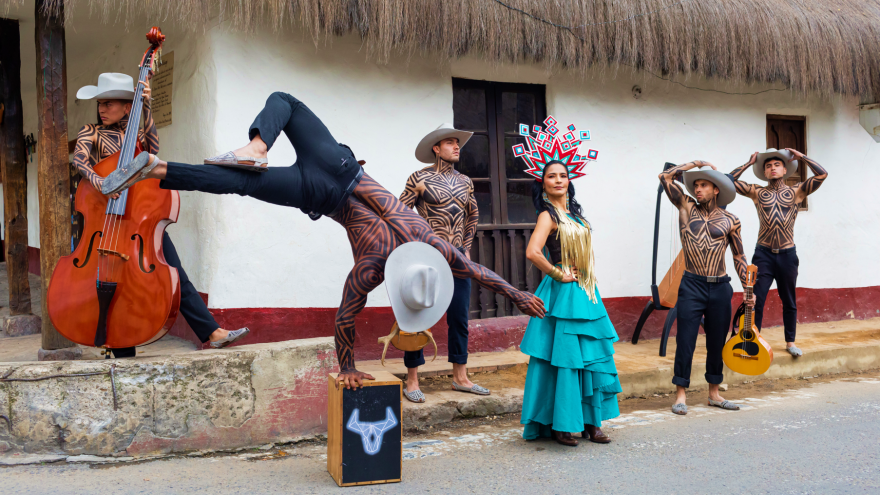If you ask someone about los Llanos — the plains region shared across Venezuela and Colombia — they might talk to you about cowboys. Or at least their modern-day equivalent: ranchers who ride horseback, herd cattle (oftentimes barefoot) and who also play music.
For centuries, the folkloric style of joropo has painted rich stories of the people who live off the land across the Orinoco region, with melodies often composed of the Venezuelan cuatro, maracas, harps and bass. But musica llanera is also predominantly by and about men.
The artist Ana Veydó, who grew up listening to joropo play on the radio in her hometown of Boyacá, Colombia, has been trying to complicate that image for decades. In 2000, she co-founded the band Cimarrón with Carlos "Cuco" Rojas.
"The problem is that the identity and sonority of the region is associated only with one sound, with joropo," she tells NPR. "For Cimarrón, it's always been important to show that there's great diversity here."
Traditional joropo doesn't always reflect the African and Indigenous roots of the Orinoco, says Veydó. So Cimarrón began adding those components to its sound, bringing in a zapateador, a shoe stomper, on stage as part of their performance. The dance that goes along with joropo is an essential part of the music, but it's typically done with a partner. For Cimarrón, Veydó says it was crucial to have the dancer alone, performing as percussion.
Over time, the band incorporated more and more instruments that added cultural and historic layers to its sound: the Brazilian surdo, the Colombian tambora costeña, the Peruvian cajón and deer horns used in Indigenous musical traditions.
"I think that's what we've done over the course of these years: play a little with the rich sonority of [la Orinoquía]," says Veydó.
For two decades, Cimarrón traveled the world, playing that sound on stages ranging from the Kennedy Center in Washington, D.C. to Band on the Wall in Manchester, England. But in 2020, tragedy struck. Carlos Cuco Rojas, the co-founder of the band and Veydó's creative and romantic partner, passed away. His death resulted in heartbreak and a new wave of challenges for Ana Veydó.
"Firstly, remaining as a woman, alone, fronting a band of men," she explains. "It's one thing when a man speaks — it's another coming from a woman."
It's been complicated demanding respect and understanding as Cimarrón's leader in a region that's still predominantly machista, she explains. But that effort is on full display in Cimarrón's newest album, La Recia — "the tough woman."
"La recia is a term that's typically associated with men's values — a man is recio because his voice is strong, because he tames horses," she explains. "So I wanted, with La Recia, to represent women's reality, too."
Mostly, Veydó says, she wanted to flip the script and showcase there's no one universal experience to being a woman from los Llanos. Some ride horses and work with cattle, sure — but it's not the only way to construct an identity from that region.
She remembers working on the music video for "Velorio," in the town of Orocué, and having women come up to her and thank her for making their community more visible, including their traditional dances.
"That, for me, has been La Recia," she says. "The search for women's own voices in la Orinoquía."
Copyright 2022 NPR. To see more, visit https://www.npr.org.




